Презентація на тему «National Days in Britain»
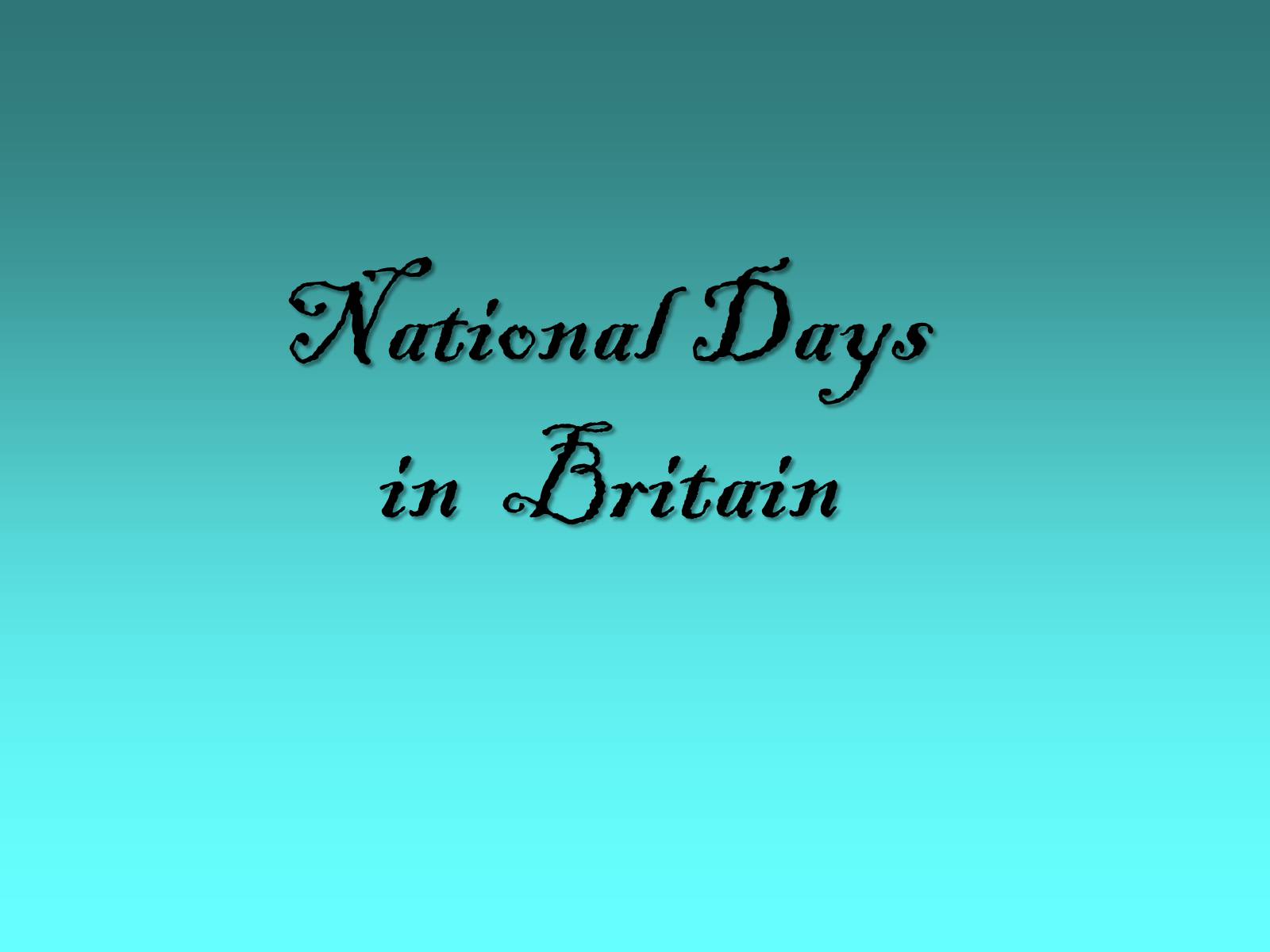
National Days in Britain
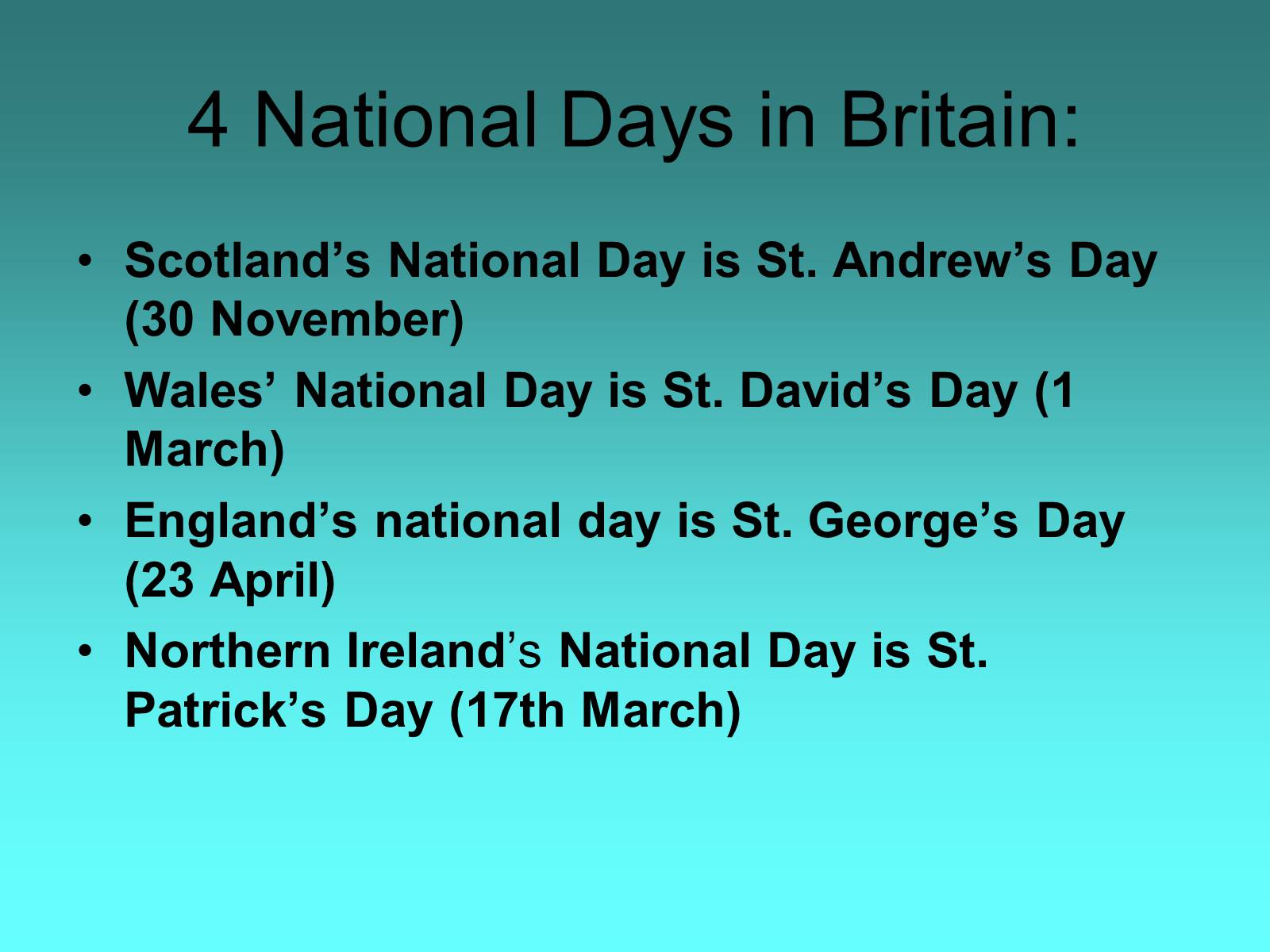
4 National Days in Britain:
Scotland's National Day is St. Andrew's Day (30 November)
Wales' National Day is St. David's Day (1 March)
England's national day is St. George's Day (23 April)
Northern Ireland's National Day is St. Patrick's Day (17th March)
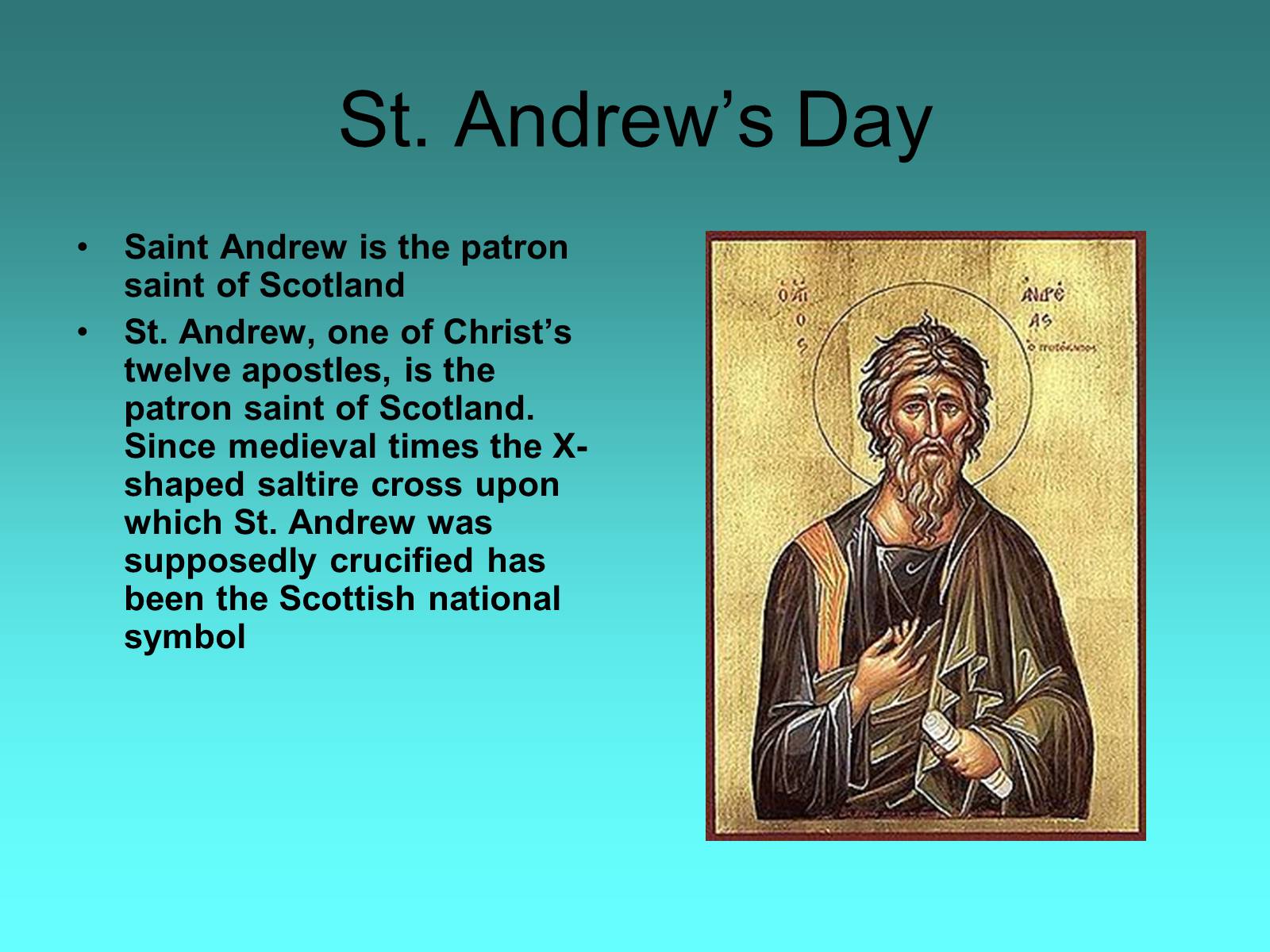
St. Andrew's Day
Saint Andrew is the patron saint of Scotland
St. Andrew, one of Christ's twelve apostles, is the patron saint of Scotland. Since medieval times the X-shaped saltire cross upon which St. Andrew was supposedly crucified has been the Scottish national symbol
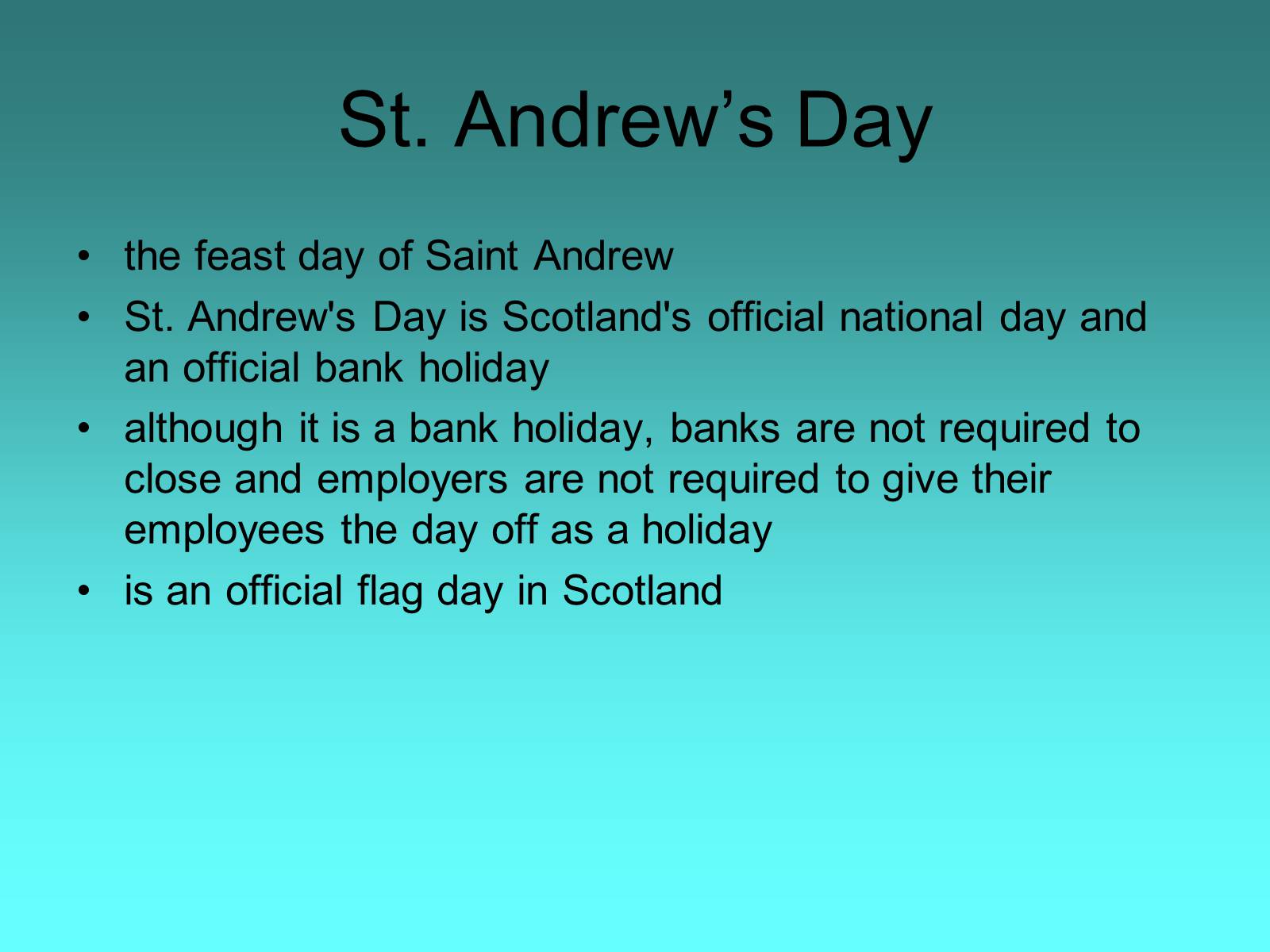
St. Andrew's Day
the feast day of Saint Andrew
St. Andrew's Day is Scotland's official national day and an official bank holiday
although it is a bank holiday, banks are not required to close and employers are not required to give their employees the day off as a holiday
is an official flag day in Scotland
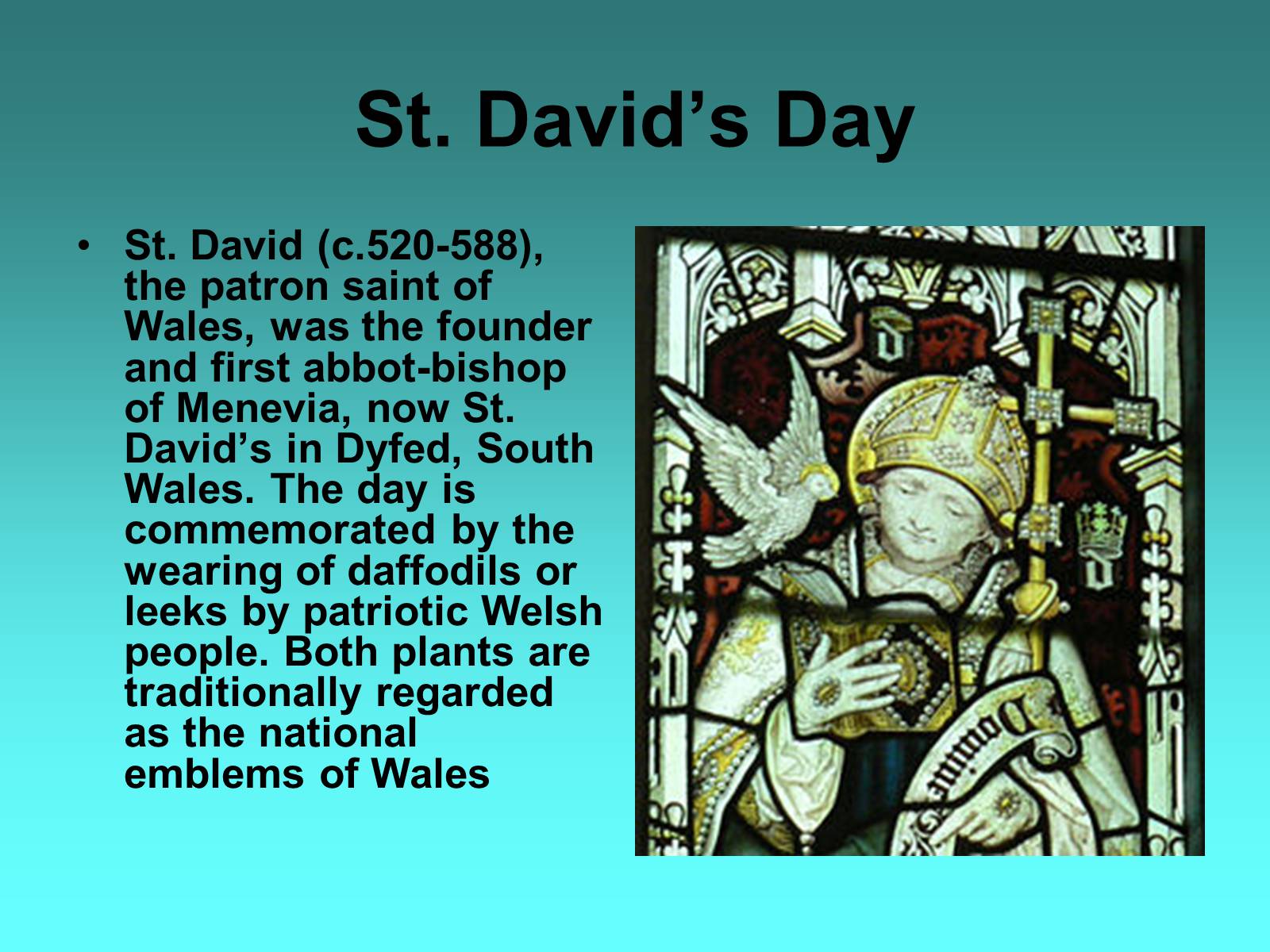
St. David's Day
St. David (c.520-588), the patron saint of Wales, was the founder and first abbot-bishop of Menevia, now St. David's in Dyfed, South Wales. The day is commemorated by the wearing of daffodils or leeks by patriotic Welsh people. Both plants are traditionally regarded as the national emblems of Wales
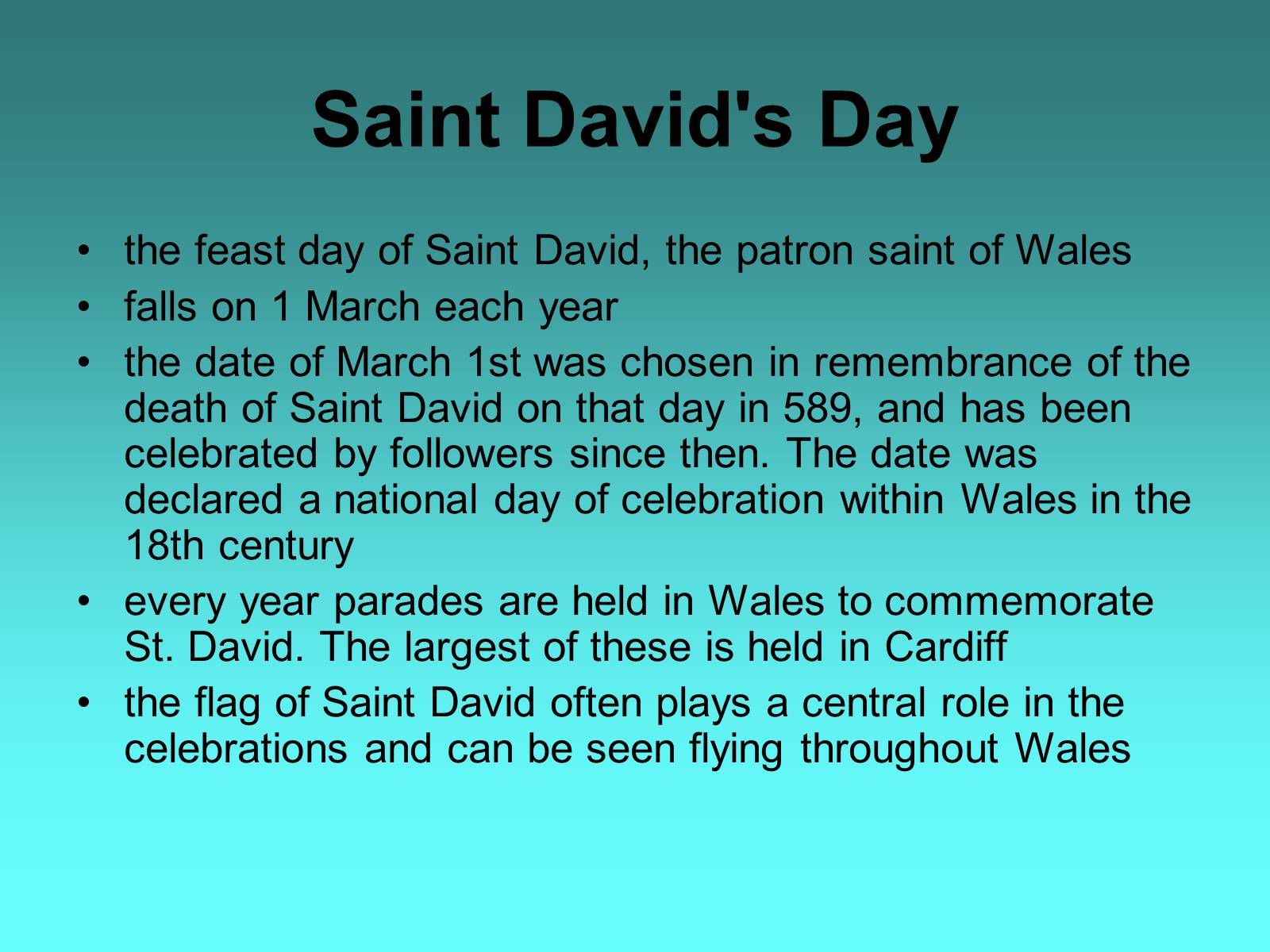
Saint David's Day
the feast day of Saint David, the patron saint of Wales
falls on 1 March each year
the date of March 1st was chosen in remembrance of the death of Saint David on that day in 589, and has been celebrated by followers since then. The date was declared a national day of celebration within Wales in the 18th century
every year parades are held in Wales to commemorate St. David. The largest of these is held in Cardiff
the flag of Saint David often plays a central role in the celebrations and can be seen flying throughout Wales
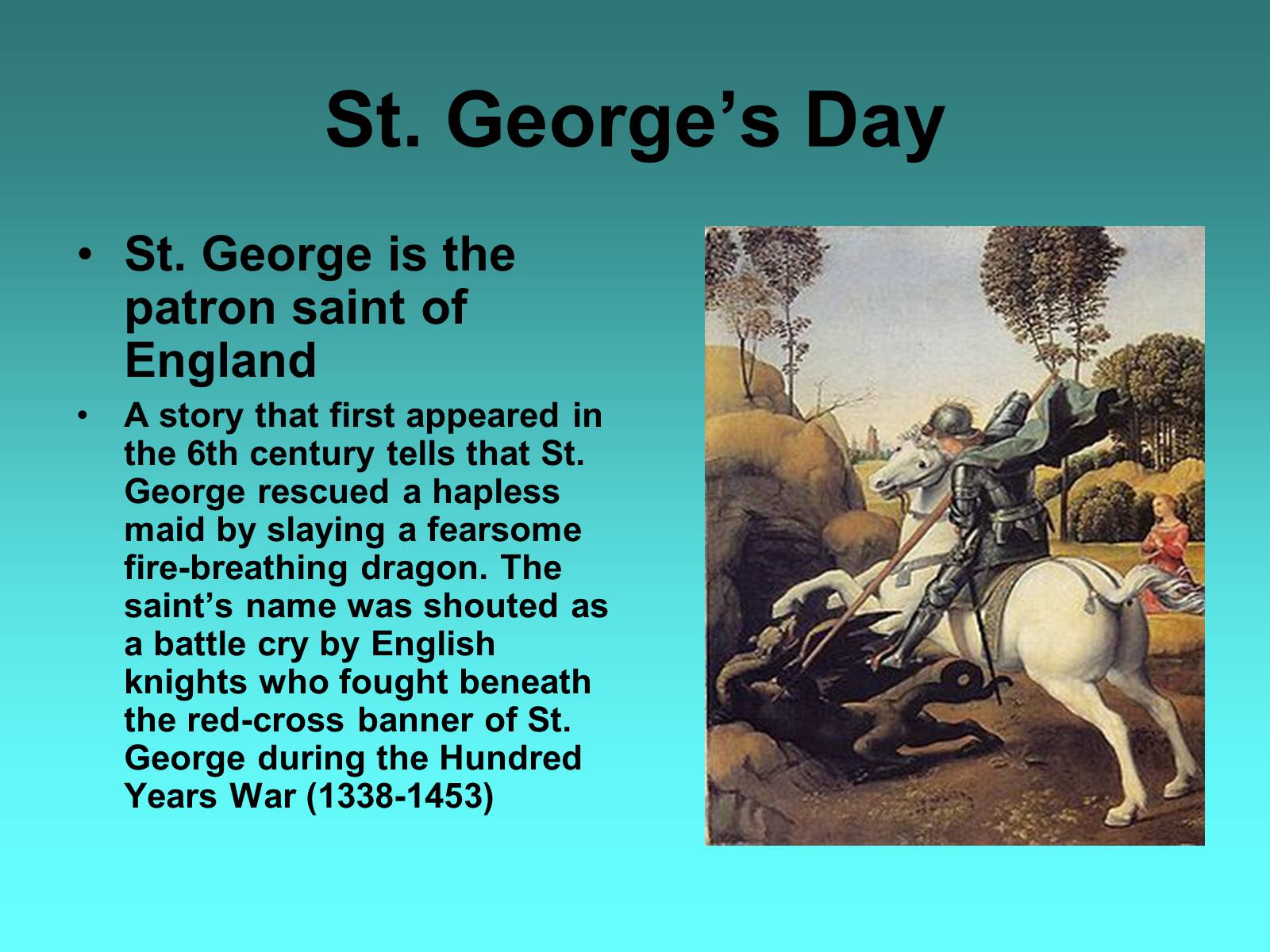
St. George's Day
St. George is the patron saint of England
A story that first appeared in the 6th century tells that St. George rescued a hapless maid by slaying a fearsome fire-breathing dragon. The saint's name was shouted as a battle cry by English knights who fought beneath the red-cross banner of St. George during the Hundred Years War (1338-1453)
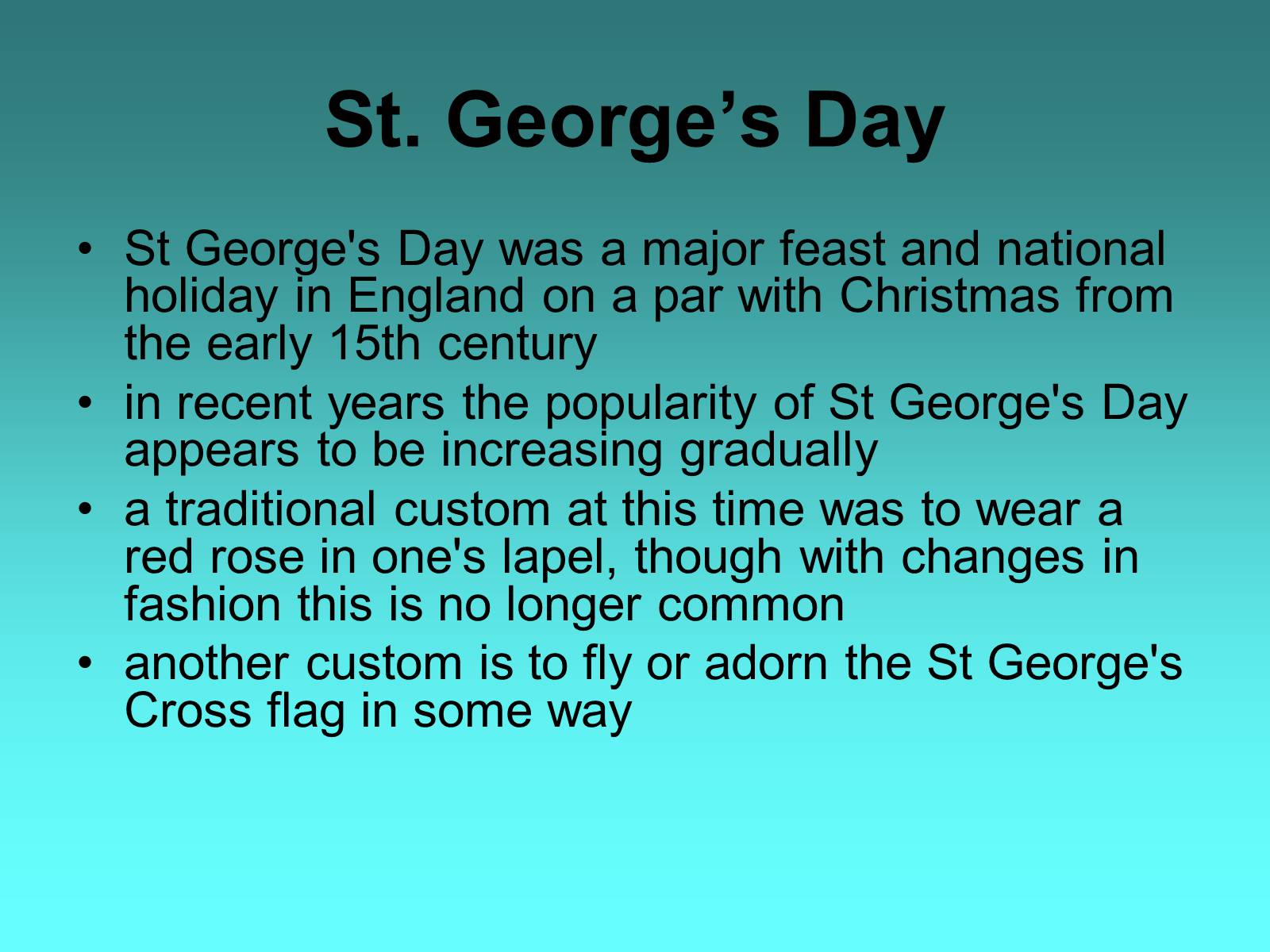
St. George's Day
St George's Day was a major feast and national holiday in England on a par with Christmas from the early 15th century
in recent years the popularity of St George's Day appears to be increasing gradually
a traditional custom at this time was to wear a red rose in one's lapel, though with changes in fashion this is no longer common
another custom is to fly or adorn the St George's Cross flag in some way
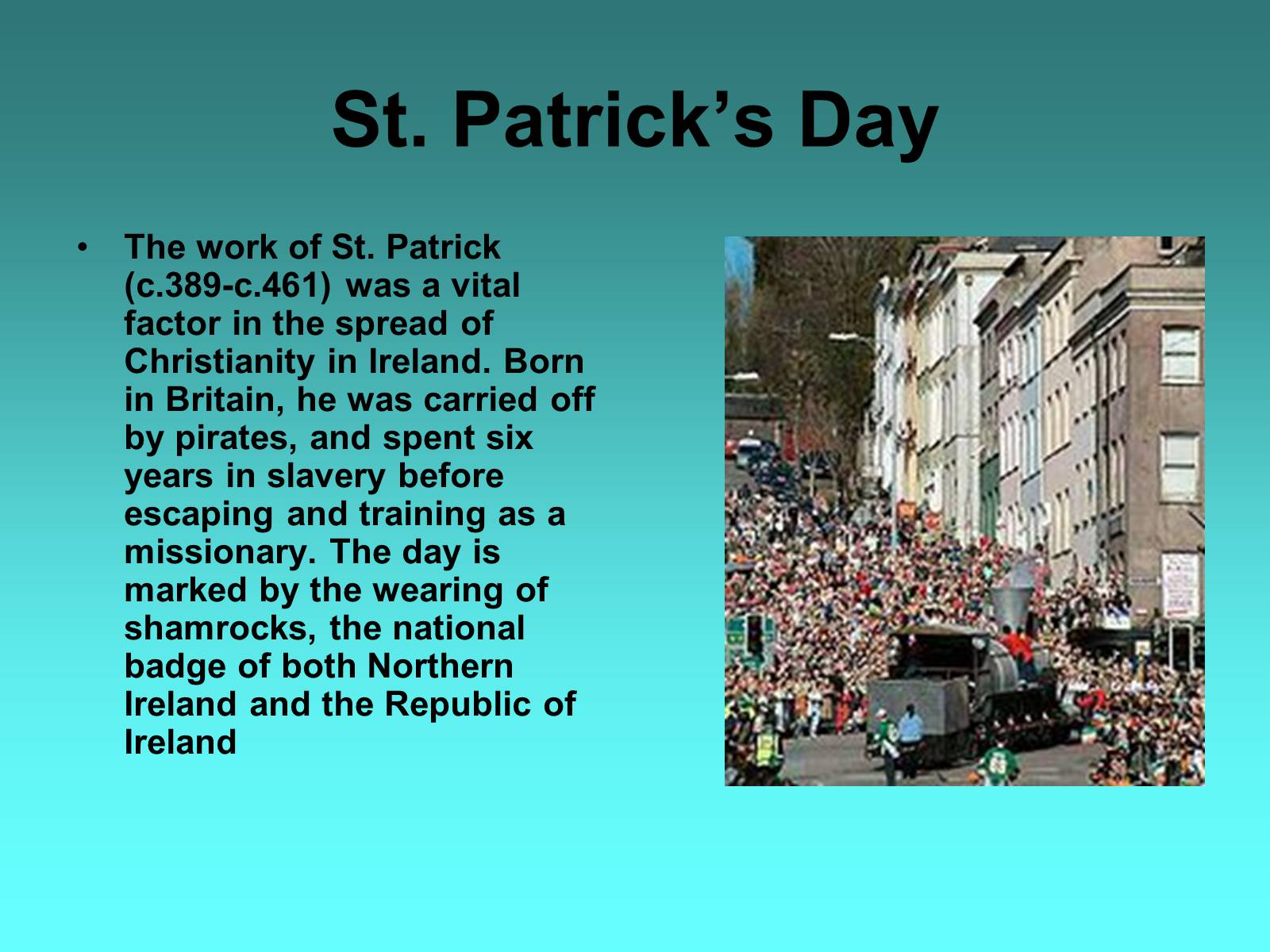
St. Patrick's Day
The work of St. Patrick (c.389-c.461) was a vital factor in the spread of Christianity in Ireland. Born in Britain, he was carried off by pirates, and spent six years in slavery before escaping and training as a missionary. The day is marked by the wearing of shamrocks, the national badge of both Northern Ireland and the Republic of Ireland
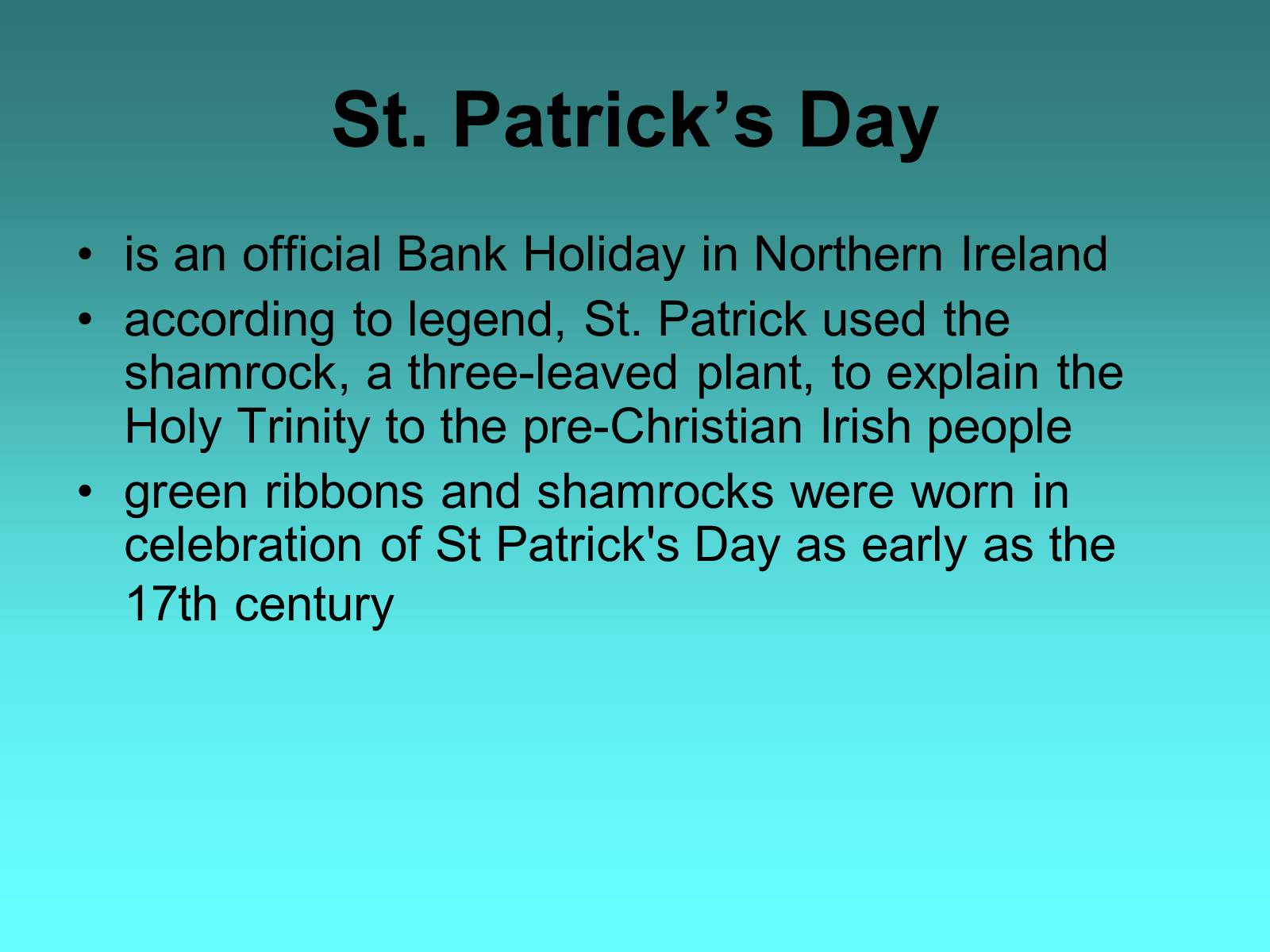
St. Patrick's Day
is an official Bank Holiday in Northern Ireland
according to legend, St. Patrick used the shamrock, a three-leaved plant, to explain the Holy Trinity to the pre-Christian Irish people
green ribbons and shamrocks were worn in celebration of St Patrick's Day as early as the 17th century